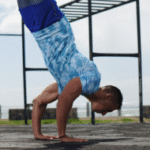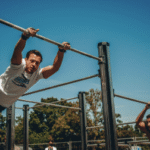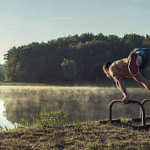Gymnastics Handstand Class: Learn from Professionals
In the bustling fitness landscape of Houston, where calisthenics and skill-based training are gaining immense popularity, the desire to master the handstand is at an all-time high. While many programs teach inversions, a gymnastics handstand class offers a distinct and unparalleled approach. It’s not just about getting upside down; it’s about learning the art of hand-balancing through the precise, methodical, and safety-obsessed lens of professional gymnastics coaching.
If you’ve ever been intimidated by the thought of a handstand or frustrated by a lack of progress, learning from gymnastics professionals can be a game-changer. This guide will take you inside a typical class, detailing the process, the philosophy, and what makes this the definitive way to build a true handstand.
The Gymnastics Advantage: Why Learn from These Professionals?
Before diving into the class structure, it’s crucial to understand what makes the gymnastics approach unique. Gymnastics coaches are masters of body mechanics and skill progression. Their methodology is built on:
The Perfect “Line”: Gymnastics is obsessed with achieving a perfectly straight, stacked body line from hands to toes. This isn’t just for aesthetics; it’s the most efficient and stable position for balancing.
Systematic Progression: No steps are ever skipped. Every skill is broken down into its smallest components and built up systematically.
Uncompromising Safety: The entire training philosophy is designed to “bulletproof” the body against injury through meticulous conditioning and the mastery of safe exit strategies.
What to Expect in Your First Class: A Step-by-Step Breakdown
Forget any preconceived notions of being thrown into a freestanding handstand on day one. A professional gymnastics class for adult beginners is a masterclass in preparation.
Phase 1: The Foundation – Preparing the Body (First 20-25 Minutes)
This is the most critical phase and where the expertise of a gymnastics coach immediately becomes apparent. The focus is on preparing your body for the unique demands of being on your hands.
Wrist “Bulletproofing”: This is the top priority. Expect a comprehensive series of wrist-specific warm-ups. This includes circles, flexion and extension stretches, and gentle strengthening exercises. The goal is to build resilience in the joints that will support your entire body.
Shoulder Activation and Mobility: You will go through drills designed to “open up” and stabilize the shoulder girdle. This includes exercises like scapular push-ups, cat-cows, and dynamic stretches to ensure your shoulders can safely handle the load and achieve the necessary range of motion.
Core Ignition: The coach will lead you through a series of exercises to activate your deep core muscles. The concept of the “hollow body” position—a fundamental shape in gymnastics—will be introduced here, on the floor.
Phase 2: The Engine Room – Building Handstand-Specific Strength (Next 15-20 Minutes)
This part of the class is dedicated to building the specific strength required for the skill.
Mastering the Hollow Body: You will practice holding the hollow body shape on your back. This drill teaches you how to create the rigid, stable trunk that is essential for a straight handstand and prevents the common “banana back” error.
Wall-Supported Drills: The wall is the most important piece of equipment for a beginner. You will be introduced to the chest-to-wall handstand . This is far safer and more effective than kicking up with your back to the wall. In this position, you can safely build endurance and practice maintaining a straight body line.
Strength Conditioning: Expect to perform drills like shoulder taps (tapping the opposite shoulder while in a plank or wall handstand) and pike push-ups to build the specific pushing strength needed.
Phase 3: The Safety Net – Learning How to Fall (Crucial 5-10 Minutes)
This is what truly separates a professional class from amateur instruction. A gymnastics coach will teach you how to fall before you are ever at risk of falling.
The Cartwheel Bail: The most common and safest exit strategy is the “bail-out” or cartwheel exit. The coach will break this movement down into simple steps, having you practice from low-impact positions (like a pike on the floor) until the motion becomes instinctive. Knowing you have a safe escape route is the key to overcoming the fear of balancing away from the wall.
Phase 4: The Skill Application – Putting it all Together (Final 10-15 Minutes)
Only after the body is prepared and safety is established will you begin to explore balance.
Balance Drills at the Wall: You will practice drills like heel pulls and toe pulls , where you learn to find your balance point by gently moving your feet away from the wall and returning with control.
Expert Spotting: The instructor will provide hands-on spotting, physically supporting you as you attempt to find your balance. This provides a crucial safety net and allows the coach to give you real-time tactile feedback, helping you feel the correct alignment.
Who is This Class For?
This class is designed for any adult in Houston, regardless of their fitness background.
You do not need to be able to do a push-up to start.
You do not need to be flexible.
You do not need any prior experience.
The program is designed to build these attributes from the ground up in a safe, progressive manner.
Conclusion:
A gymnastics handstand class is an investment in high-quality instruction. You can expect a meticulous, safety-first approach that focuses on building a strong foundation before ever attempting to balance. You will learn from professionals who have a deep, scientific understanding of body mechanics and skill progression. For anyone in Houston who is serious about learning a true, technically sound handstand, this is the most effective and empowering path you can take.

Gymnastics Handstand Class: Learn from Professionals
Route
Calisthenics Gym Houston Functional Bodyweight Training
Secondary phone: (346) 483-3195
Email: info@calisthenicsclubhouston.com
URL: https://calisthenicsclubhouston.com/
Monday 6:00 AM - 7:00 PM Tuesday 6:00 AM - 7:00 PM Open now Wednesday 6:00 AM - 7:00 PM Thursday 6:00 AM - 7:00 PM Friday 12:00 PM - 6:30 PM Saturday 9:45 AM - 12:00 PM Sunday 3:00 PM - 5:00 PM





